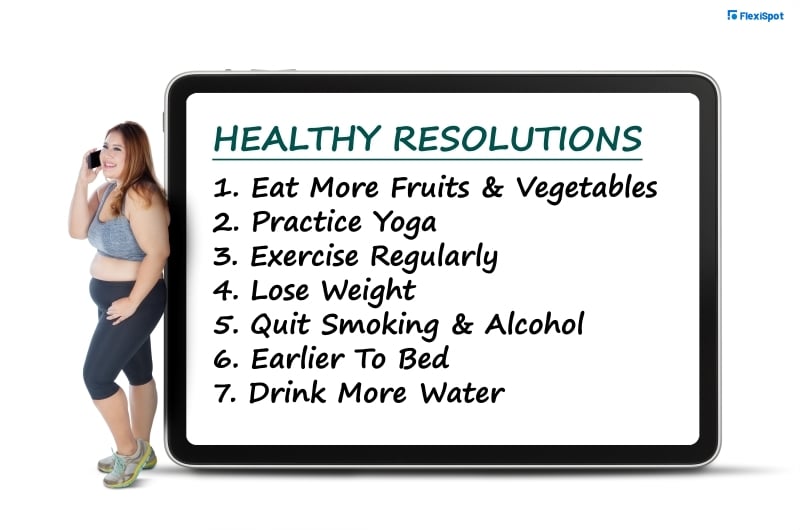A goal helps you to make your dream a reality. You will get to define and measure your own success if you set a goal that will be your benchmark. Many people use the SMART method in writing down their goals because the strategy details out actionable steps to make the goal happen in the future.
So what is SMART? As an acronym, it stands for Specific, Measurable, Attainable, Relevant, and Time-bound. This strategy will help you evaluate the actions that you need to do so that you will be able to achieve your future goal.
Let’s take a look at a very simple goal of toning your tummy area by working hard for the abs to pop out. You might think that this is already so specific but when you do the SMART method, you’d quickly realize that your goal still lacks some details. You have to write down a goal that is quantifiable so for this example, you specifically want your tummy to flatten and show off at least 4-pack abs or side definition. You would further give a detailed description of your goal as you go through the SMART method.
So basically, when you set a SMART goal, as mentioned, the goal should be specific. I want to get abs. It should be measurable. I want to get 4-pack abs. It should be achievable. I can achieve this by hitting the gym, jogging in parks, and making sure to stick to a strict diet. It should also be relevant. Since I want to get 4-pack abs, my goal is to do 10-minute ab exercises every single day. And lastly, a time-bound goal would have a deadline. I want to get 4-pack abs by hitting the gym and doing 10-minute ab exercises every day for the next 100 days.
Here’s a more detailed breakdown of how to make a SMART goal.

1. The goal must be specific.
Your description must be specific as much as possible. Use quantifiable terms and specify what you need to do to achieve it.
For instance, your goal is to exercise better and more frequently. That goal should look like “I want to have better physical endurance and a stronger body.
You can do so by always making it a point to go to the gym. Or you can work out at home using different ergonomic tools.

2. The goal must be measurable
You can only say that you’ve achieved your goal when you have a way to measure it. When you employ the SMART strategy, you have a specific plan to achieve a goal within a working time frame.
After setting your specific goal, it is time to evaluate how you will take action to measure it. This also includes action steps to make sure that you are able to achieve your goal. You can for example indicate the time that you are going to check out your progress. Your goal to have better endurance and stamina during exercise can be measurable when you say “I will be able to do a straight 15-minute exercise routine with only 30-second rests in between two sets.”

3. The goal must be achievable.
Your goal must be realistic in the first place for it to become your reality. See how achievable your goal is by looking at all the factors into play. How long do you think it will take for you to achieve it? What are the obstacles that you will be encountering? What measurement metrics will make you see if your goal is realistic or not? You will be more motivated to work on your goal when it’s realistic and achievable. For instance, your goal is to have better endurance and to finish a 15-minute exercise with minimal rest. You can add the achievable criteria by saying, “I can achieve this by doing ab exercises every day until I harden my core.”
This is in connection to your measurable goal. If the goal is measurable at first, then most likely, it will be easy for you to achieve it. Sometimes, your resources are not enough so you can adjust the time frame to make sure that you still achieve your goal, albeit delayed. For instance, when you already have the money to invest in tools, why not use a desk bike while working? This can help you inject exercise into your daily routine while finishing your tasks for your job. Exercising regularly will improve your stamina and endurance.

4. Your goal must be relevant.
Your strategy must be relevant to the goal that you are trying to achieve. In our example of wanting to improve your stamina and endurance in exercise, what makes sense as a goal is to exercise every day for at least five minutes so you can eventually do a whole 15-minute exercise with minimal rest. Anything that you do for your goal to be reached must be influential to your progress. The bottom line is that your set goal and the measurable steps that you will take to achieve it must all be related and aligned with one another.

5. You should have a time-bound schedule.
You can’t keep on working on a goal without a set deadline. For you to be clear with your direction, you should be following a timeline that will detail how long it will be for you to reach your milestones and get the results that you want.
First, identify if your goal is short-term or long-term. Then, it’ll be easy for you to plan out a schedule with set deadlines and ways on how you could achieve your objectives. Considering your circumstances and all external factors, the timeline must be realistic and allows for adjusting your goal based on being specific, achievable, and relatable.
So in our example, you want to build stamina and endurance in exercise that you can measure by being able to do a 15-minute workout with minimal rest. You’ll achieve this by exercising every day up until, say, six weeks when you can finally, hopefully, say, that you are a fit homie.